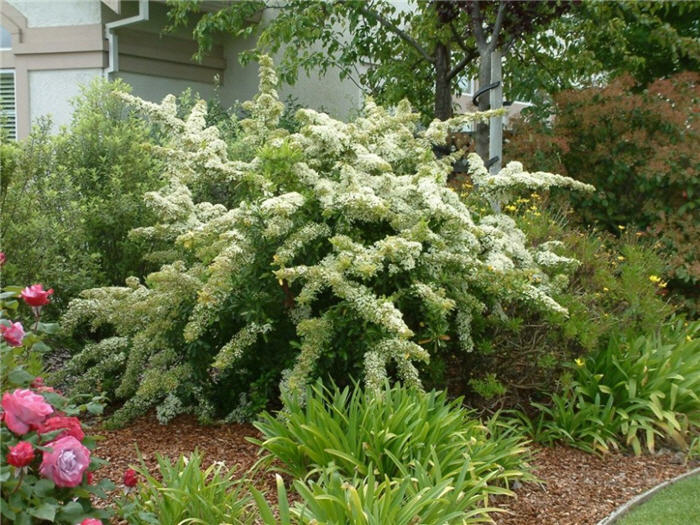| Botanical Name: Pyracantha | |
| Common Name: Pyracantha |

-
Anatomy
-
Culture
-
Design
Plant Type
Broadleaf Evergreen, Shrub
Height Range
1-3', 3-6', 6-12'
Flower Color
White
Flower Season
Spring
Leaf Color
Dark Green
Bark Color
Brown
Fruit Color
Orange, Red, Yellow
Fruit Season
Fall
Sun
Full, Half
Water
Low
Growth Rate
Moderate
Soil Type
Sandy, Clay, Loam, Rocky, Unparticular
Soil Condition
Average, Rich, Poor, Well-drained, Dry
Soil pH
Acid, Neutral, Basic
Adverse Factors
Attracts Bees, Invasive, Thorns/Spines
Design Styles
Mediterranean, Ranch, Spanish
Accenting Features
Showy Flowers
Seasonal Interest
Winter, Spring, Fall
Location Uses
Background, Walls / Fences
Special Uses
Cut Flowers, Erosion Control, Hedge, Screen, Fire Resistant, Naturalizing
Attracts Wildlife
Birds
Information by: Stephanie Duer
Photographer: Connon Nursery
Photographer: Connon Nursery
-
Description
-
Notes
Pyracantha are fast-growing, evergreen shrubs that range in size from large, upright, arching, mounding masses to lower-growing, creeping, suckering groundcovers. All have clusters of fragrant white, spring flowers that mass in clusters along the ends of the previous years branches. Blossoms are followed by berries that ripen in the fall, and depending on the variety, are in shades of red to orange, to yellow. Leaves are small, dark green, glossy, and evergreen. The branches are populated with stiff, sharp thorns. It provides year-long interest to the shrub border, but I'd plant it where you don't have to get too close. The branches with either the flowers or berries, however, are striking in vases.
Grow in well-drained soils in full sun to partial shade. Is indifferent to soil types, growing in sandy to clay soils and everything in between. Is also tolerant of both acidic and alkaline soils. Drought tolerant once established. It may be pruned selectively or to renovate, also well suited to espallier. It will sucker and spread, so place accordingly. Thorns make maintenance something to be dreaded, but on the flip side, it is a very effective barrier. Fire resistant.